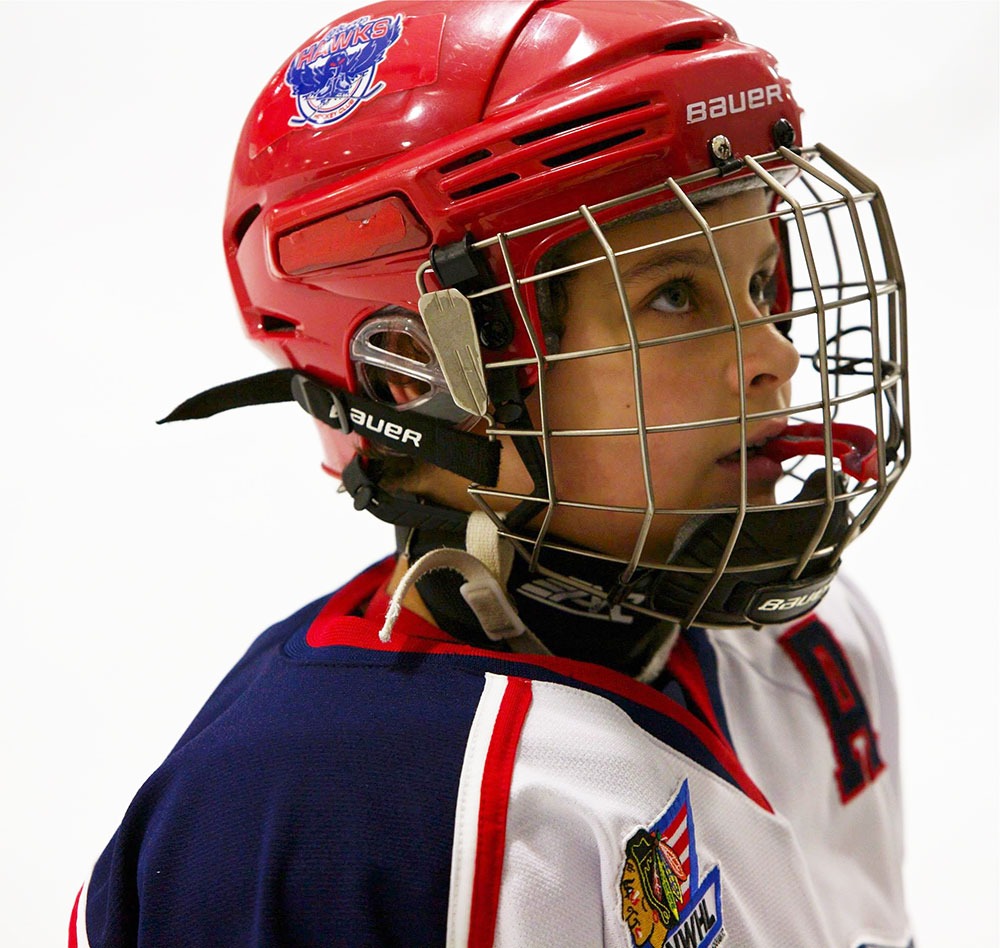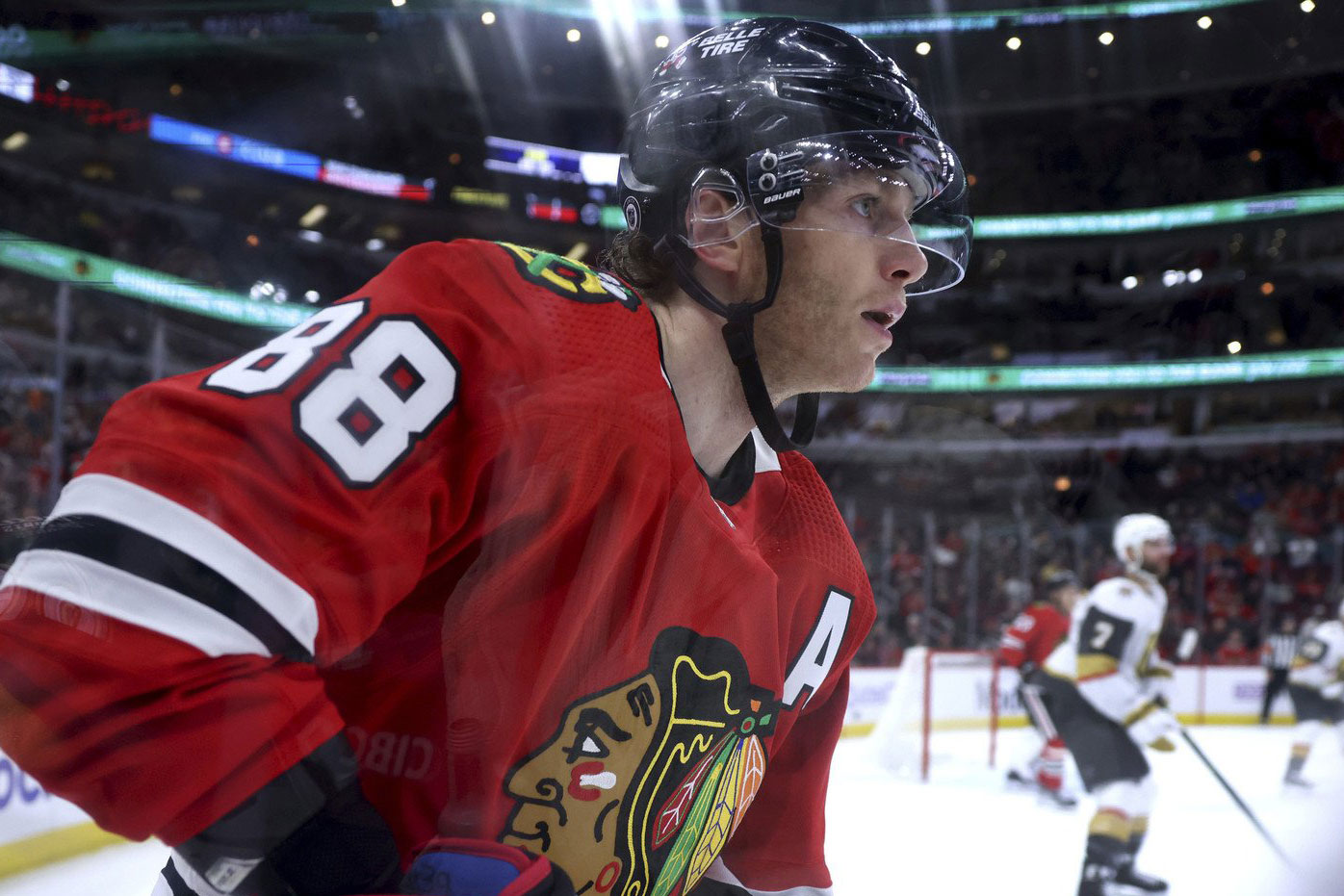I was 11 years old when I found myself seated in the nosebleeds of the United Center. It was my first Blackhawks game and I knew nothing about hockey. But then I spotted No. 88 spring onto the ice for warmups.
Of the 40 players circling the rink, I became tunnel-visioned on Patrick Kane — himself still a kid at 21 years old and only two seasons into his career. Kane was seemingly the smallest player, and he navigated his way around the ice with complete certainty and control. His style was impeccable, both in the way he played and the way he dressed (all Nike Bauer, one of the premier hockey brands of the early aughts).
He spun, swung, and released the puck into precise corners of the net. Warmups came to a close and he remained on the ice until every player left — and 20,000 sets of eyes focused on him. He floated up to the blue line and made his way toward the net. He slid the puck between his legs while he spun 360 degrees, and the puck landed perfectly on his backhand before he released it into the top shelf of the net.
As he got off the ice, I got into hockey.
I decided that I was to do as Kane did. My parents got a net for our house, and I was outfitted with rollerblades and a stick. I joined hockey camps and devoted any free time to being on the ice. I can’t say with complete certainty how many hours I spent stickhandling on my driveway, the amount of dizziness I experienced while trying to do spin-o-ramas, or how many dents I put into my garage door with pucks.
I wasn’t the only one trying to emulate Kane. Numerous other Chicago-area youth hockey players were all aspiring, too. Not long after my first Blackhawks game, Team USA hosted their 2010 Olympic tryouts at my local ice rink. The county’s best were in attendance, vying for a spot in Vancouver. My mom took me out of school and we watched from the bleachers. In typical fashion, there was No. 88: calm, cool, and collected. Hundreds of kids gathered near the gate waiting for Kane to get off the ice. I rushed over with my Blackhawks hat, careened through and climbed the gate, and fell a few feet next to the door leading onto the ice. As he exited, I stood with clammy hands and squeaked out, “Can you sign this?” His glove came off and with a swift carving of the sharpie appeared “Pat 88” on my hat.

At the end of the Blackhawks’ 2010 season, they faced the Philadelphia Flyers in the Stanley Cup Finals. I was 12 years old and I was glued to the TV. The game went into overtime and I clutched a Blackhawks flag. Four minutes into the deciding period of the game, Kane did as Kane does: While cruising through the middle of the offensive zone, he found open space to receive a pass. He shuffled past a Flyers defenseman, moved down the left wall, and shot the game-winning goal from an impossible angle. Nobody — not even his teammates — knew that it went in the net until Kane began celebrating. After a 49-year drought, the Chicago Blackhawks were handed a Stanley Cup Championship and I had witnessed history.
Although he was drafted No. 1 overall in 2007, Kane was an unlikely Blackhawk. Standing 5-foot-10 and 170 pounds, his skill level and finesse were somewhat new to the team and the league as a whole. Before him, the Blackhawks were known for tough guys who weren’t afraid to break their noses, toss their gloves, and sit in the penalty box.
Right out of the gate, Kane was in opposition to anything the game had seen previously. Behind-the-back passes, near-impossible backhand shots, wraparounds, dangling through whole rosters — these were all part of his repertoire. There’s a saying in hockey that the stat sheet doesn’t show how you scored a goal, only that you scored a goal. But the way that Kane plays, it’s as though he demands that you take note of his craftsmanship. A Kane goal isn’t merely a statistic, it’s a highlight reel. Of course, he’s always sure to celebrate, which gave him the nickname “Showtime.”
He helped the team win three Stanley Cups and became a household name in Chicago. I kept watching and kept dissecting Kane until I eventually left the game after my first year of college hockey at DePaul University. I always tried to maintain a little bit of my idol, both in my dress and game style. I would over-handle the puck, be the last one off the ice, and wrapped white goalie tape on my stick blade with the black puck lines. Like Kane, I wore my socks fully tucked over my skates, and played exclusively in Bauer gear. Thinking back on my decade of playing the sport, one of the reasons it felt so special was that feeling of emulating one of the greats.
The news of the Kane trade on Tuesday was bittersweet. After all, No. 88 is heading toward the end of his career. But he will be joining an elite roster with the New York Rangers, and be reunited with the Breadman, otherwise known as Artemi Panarin: former Chicago Blackhawk and the Robin to Kane’s Batman. The Chicago Blackhawks are now looking at a lengthy rebuild. I’ll stick beside the team, but I’m now also a begrudging New York Rangers fan.
As for the 16 years he spent in Chicago? Well, all I have to say is thank you. I was an impressionable kid looking for something to grab onto. Hockey ignited a passion in me — and it was all fostered through Patrick Kane.



